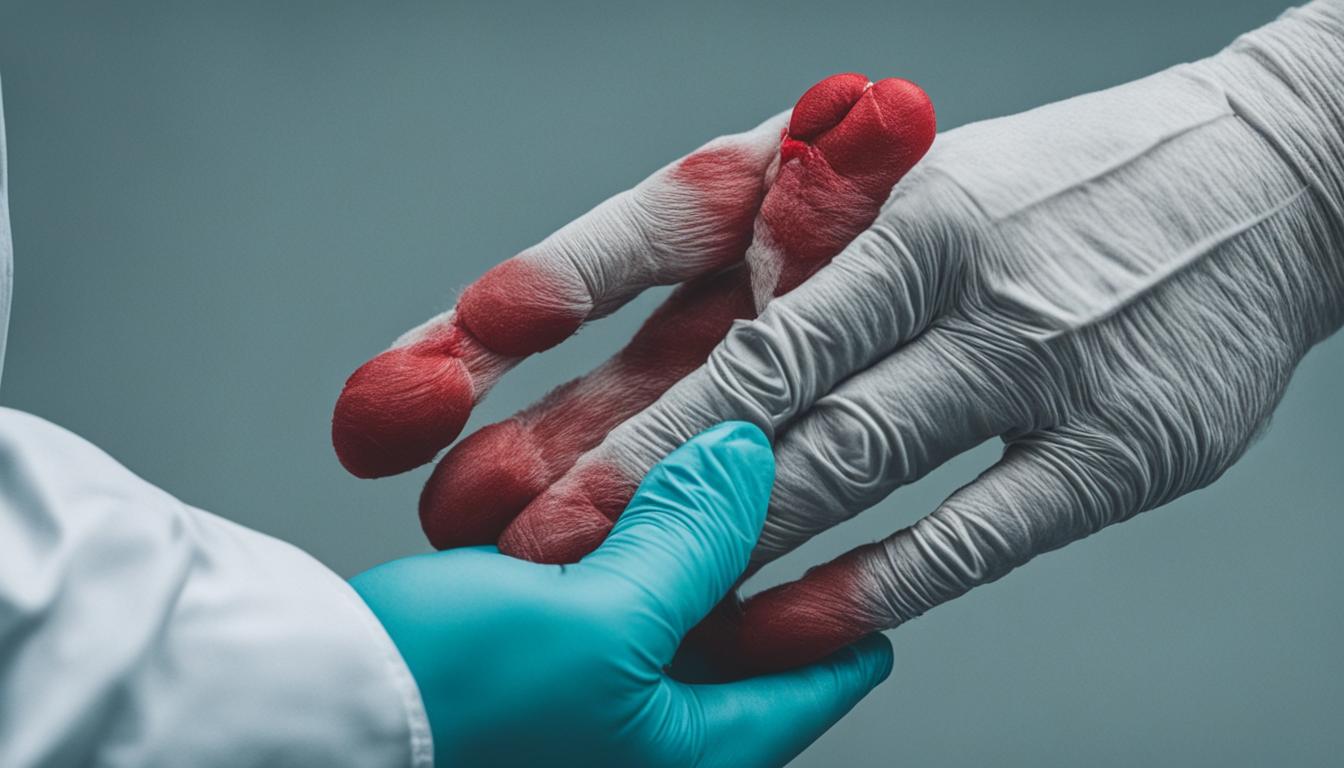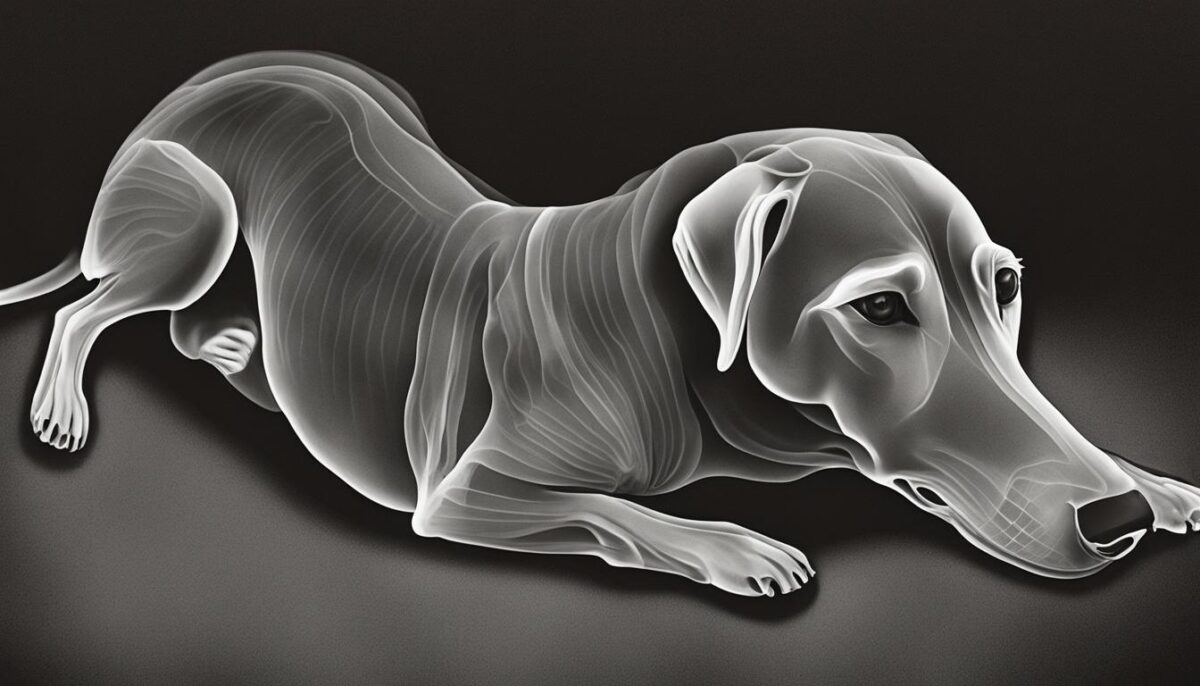If you’ve ever heard of someone having gout, you might wonder if dogs can get it too. Gout is when humans get painful joints because there’s too much of something called uric acid building up. For dogs, they can have their own troubles with uric acid, but it’s a bit different.
Some dogs have trouble making the uric acid go away and it turns into stones in their kidneys or bladder. The first thing you might notice is your furry friend needing to go potty a lot or going in places they shouldn’t. Sometimes, you might even see blood in their pee. This is serious and could turn into an emergency, so it’s super important to keep an eye on your dog’s bathroom habits and listen to what the vet says about their food.
Dalmatians were the first dogs found to have a special thing in their genes that makes this happen. It passes down from parents to puppies and needs both mom and dad to have it for the pup to show signs of it. Taking care of our four-legged pals means watching for any small changes, especially when they go potty!
Key Takeaways
- Pet health is super important and keeping an eye on your dog’s potty habits helps you stay on top of things.
- Dogs don’t actually get gout like people do — they can have something similar called Hyperuricosuria or HUU.
- Urinary issues in dogs, like seeing blood in the urine, can be a sign of too much uric acid.
- Knowing your dog’s breed can help since some breeds are more likely to have trouble with uric acid.
- Always talk to your vet if you notice any changes in how often your dog is peeing or where they’re doing it.
Understanding Gout in Dogs
When you own a dog, it’s important to know about their health, just like we do for ourselves. One thing some dog parents wonder about is gout, which humans can get. Gout happens when a body part gets swollen and painful because there’s too much of something called uric acid. But did you know dogs have a similar health issue?
Defining Hyperuricosuria (HUU)
Hyperuricosuria in dogs is a big word, but let’s break it down. It’s a health thing where dogs have too much uric acid in their pee. Normally, this acid turns into something else that doesn’t hurt them, thanks to a gene. But sometimes, a change in this gene can make things go wrong. That’s when uric acid conversion doesn’t happen well, and our furry friends might get sick.
Why Dogs Don’t Typically Get Gout
Even though dogs can have a lot of uric acid, they don’t usually get gout like people. That’s because of the way their bodies handle canine purine metabolism, which is just a fancy way of talking about how dog bodies break down certain foods. Instead of getting the painful joints from gout, dogs might get something called bladder stones if the uric acid builds up.
The Role of Uric Acid in Canine Health
Uric acid isn’t always bad. It’s just a part of how dogs’ bodies work. But when the acid sticks around instead of changing into a harmless thing, it could lead to trouble. If it forms hard lumps in a dog’s bladder or kidneys, those are bladder stones. And they’re not something to ignore because they can make our dogs very uncomfortable and make it hard for them to pee. Taking care of urinary health in dogs is super important! So what can we do? We should make sure they have good food to eat and take them to the vet for check-ups to keep them healthy and happy!
Identifying Symptoms of Urate Stones
If your dog is acting a bit strange when doing its bathroom business, you may wonder what’s going on. They could have something called urate stones in their body. This health issue affects the way they pee and can make them feel not so good. Just like finding clues in a game, spotting the first signs of urinary conditions in dogs is key.
Early Signs of Urinary Issues
When your furry friend starts having troubles, like peeing more often or in places they shouldn’t, it’s time to take note. You might also see blood in their urine, which can look scary. These symptoms of urinary conditions in dogs show up slowly, and it’s super important to see a vet if you spot any. Why? Because these small troubles can lead to a big problem called urinary obstruction, which is super serious and needs quick help.
Recognizing a Medical Emergency
Imagine if you couldn’t pee at all—ouch! That’s what urinary obstruction is like for dogs. This blockage can make your pup really sick and could even be life-threatening. If you see your dog trying but not being able to pee, or they’re in pain around their belly, rush them to the vet right away. It’s better to be safe than sorry because catching and treating urate stones in dogs early can really help keep your dog’s urinary tract health in tip-top shape!
Table: Signs and What They Mean
| Signs to Watch Out For | What It Could Mean |
|---|---|
| Peeing more often | Possible urate stones forming |
| Going potty in the house | Maybe a stone is bothering them |
| Blood in the pee | A sign there’s something wrong inside |
| Can’t pee at all | A blocked pee-path — a medical emergency |
Why Some Breeds Are More Prone to Urate Stones
Have you ever wondered why some canine friends seem to have more health troubles than others? Well, just like how some people can be more likely to get certain illnesses, some dog breeds are more prone to specific health issues. When we’re talking about urate stones, there’s a health condition called Hyperuricosuria, or HUU for short, that makes some dogs more susceptible. This is related to a special part of their DNA that can get passed down from parent dogs to their puppies.
Especially if you have a Dalmatian, English Bulldog, or Yorkshire Terrier, you should pay extra attention because these breeds often have a genetic predisposition to HUU, which makes them more likely to form urate stones in their urinary system.
Genetic Factors Contributing to Urinary Conditions
These problems happen because of something inside the genes, which are like tiny instruction books for the body. There’s a specific gene, known as SLC2A9, that can have a little mess-up, or mutation, which increases the chance of having urate stones. But in most cases, a dog needs two copies of this messed-up gene, one from each parent, to actually have trouble with urate stones.
Common Breeds Affected by Urate Stones
Boys, or male dogs, seem to have this happen more often than girls, and they usually show symptoms when they are between three and four years old. Besides the breeds we already mentioned, some other friends that often deal with this are American Bulldogs, Australian Shepherds, and different kinds of Terriers. It’s important to remember that breed health tells us a lot about what kind of care our furry buddies might need to keep them feeling good.
- Dalmatians
- English Bulldogs
- Yorkshire Terriers
- American Bulldogs
- Australian Shepherds
- Various Terrier breeds
Knowing if your dog’s breed is naturally more likely to get urate stones can help you and your vet keep a closer eye on their health. It’s all about making sure our dog pals are happy, healthy, and ready to play fetch instead of feeling sick.
Diagnosis and Treatment of Urate Stones in Dogs
When your furry friend is not feeling well, and you suspect urate stones, it’s important to know how your vet might figure out what’s wrong. Unlike some other health issues that show up on X-rays, urate stones can’t be seen this way. Instead, veterinarians have special ways to look closer, like using a dog ultrasound or a canine urine test. These tools help them see if those sneaky stones are there.
Non-Visible Nature of Urate Stones on X-rays
Even though you can’t see urate stones with regular X-rays, it doesn’t mean they are not there. The vet knows this and will use an ultrasound to look inside. Think of it like a superhero with X-ray vision who can see things that are hidden! This way, the vet can help your dog feel better.
Importance of Ultrasound and Urine Analysis
Remember, an ultrasound and a urine test are key to finding those urate stones. They let the vet see what’s going on and decide how to make your dog happy and healthy again. If they find stones, they’ll figure out the best way to fix it. It might involve changing what your dog eats to make sure they get the right nutrition for urinary health.
Dietary Management and Surgical Options
If your dog has urate stones, the vet might suggest a special diet that’s low in certain foods, which helps stop new stones from forming. Sometimes though, if the stones are already there and causing trouble, your dog might need surgery to take them out. This helps your dog go back to running and playing like before. Taking good care of your dog’s nutrition and making sure they get regular checks at the vet is important. It helps keep your best friend feeling their best.
FAQ
Can Dogs Get Gout Like Humans?
While dogs can have a related condition called Hyperuricosuria (HUU) due to buildup of uric acid, it doesn’t manifest as gout as seen in humans. Instead, HUU can lead to the formation of urate stones, particularly in their urinary tract.
What is Hyperuricosuria in Dogs?
Hyperuricosuria (HUU) in dogs is a genetic mutation affecting the SLC2A9 gene, which impedes the process that converts uric acid into allantoin, leading to the potential formation of urate stones in the kidneys and bladder.
Why Don’t Dogs Typically Get Gout?
Dogs generally metabolize uric acid differently than humans, converting it to a non-toxic substance called allantoin, which is excreted in their urine. Dogs with HUU have difficulty with this conversion, but they do not develop the typical systemic gouty arthritis seen in humans.
What Are the Signs of Uric Acid Problems in Dogs?
Early signs of uric acid issues in dogs include increased frequency of urination, urinating in abnormal places, and potentially bloody urine. These symptoms can indicate the presence of urate stones which if left untreated can lead to urinary obstruction.
How Do I Recognize a Medical Emergency Related to Urate Stones in My Dog?
A medical emergency may be at hand if you notice your dog is straining to urinate, cannot urinate, or is showing signs of severe abdominal pain. These are indicators of urinary obstruction and necessitate immediate veterinary care.
Are Certain Dog Breeds More Susceptible to Urate Stones?
Yes, certain breeds like Dalmatians, English Bulldogs, and Yorkshire Terriers have a genetic predisposition to Hyperuricosuria, making them more susceptible to developing urate stones.
What Genetic Factors Contribute to Urinary Conditions in Dogs?
The mutation found in the SLC2A9 gene leads to Hyperuricosuria (HUU). This mutation causes a decreased ability to convert uric acid into allantoin, hence contributing to urate stone formation in dogs.
Why Can’t Urate Stones in Dogs Be Seen on Regular X-rays?
Urate stones are radiolucent, meaning they do not appear on standard X-rays due to their composition. Other diagnostic tools like ultrasound or analyzing urine sediment are used to detect them.
What Is the Importance of Ultrasound and Urine Analysis in Diagnosing Urate Stones?
Ultrasound and urine sediment analysis are crucial for diagnosing urate stones in dogs because these stones cannot be detected by X-ray. These methods allow veterinarians to visualize urate stones and assess their size and number.
Can Diet Help Manage Urate Stones in Dogs?
Definitely! Dietary management, especially feeding your dog a low-purine diet, is a common and effective strategy to help reduce the formation of urate stones and maintain urinary health.
What Are the Surgical Options for Dogs With Urate Stones?
If dietary management is not enough and stones have formed or caused an obstruction, surgical options may include non-invasive procedures like lithotripsy to break up the stones or surgical removal to ensure your dog’s urinary tract is not blocked.


